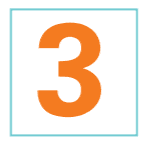5 Things to Advance Equity in Access to and Success in Advanced Coursework
Use data to identify the barriers that prevent students of color and students from low-income families from enrolling in…

Based on The Education Trust’s analysis of data from the Civil Rights Data Collection and the Common Core of Data, students in low-poverty schools are nearly twice as likely to be enrolled in eighth grade algebra as students in high-poverty schools. Similarly, students in schools with the lowest percentages of students of color are about 1.5 times as likely to be enrolled in eighth grade algebra than students in schools with the highest percentages of students of color. These inequities prevent Black, Latino, and low-income students from accessing the broad benefits of advanced coursework.
Research shows that when students are given access to advanced coursework opportunities, they work harder and engage more in school, leading to fewer absences and suspensions and higher graduation rates.1 Rigorous high school courses contribute to postsecondary success because students can graduate from high school with college credits, giving them a head start. Students who enter college with six or more credits are more likely to earn a degree. When advanced opportunities are extended to students of color, and when teachers receive training and resources, these students thrive alongside their peers.2 Not surprisingly, opportunities to take advanced courses open the door for Black and Latino students to have even more opportunities for advanced work in the future.
But too many Black, Latino, and low-income students, do not receive these opportunities. They are often locked out early, when they are denied access to gifted and talented programs in elementary school, and later when they are denied access to eighth grade algebra and not given the chance to participate in advanced coursework or programs in high school, such as Advanced Placement (AP), International Baccalaureate (IB), and dual enrollment. These students are missing out on critical opportunities that can set them up for success in college and careers. That’s why all students, including Black, Latino, and low-income students, must have access to — and be supported in — advanced coursework.

All school districts are required to report certain advanced coursework data to the U.S. Department of Education’s Civil Rights Data Collection (CRDC) for each school and each student group within the school.
Beyond this data, states must:
According to Ed Trust’s analysis, in North Carolina, Black students are severely underrepresented in eighth grade algebra: Black students represent just 14% of eighth graders enrolled in algebra, but they represent 25% of the eighth grade population. What’s more, there are fewer students enrolled in advanced courses in the schools with the most Black students, and Black students are denied access to advanced courses within schools. This data clearly signals that policymakers and advocates in North Carolina should be focusing on policy and practice change that 1) increases the number of eighth grade algebra seats in schools with high concentrations of Black students; and 2) addresses the barriers within schools to entry for Black eighth graders.

To ensure progress, states must:

To ensure that historically underserved students are fairly represented in advanced coursework, states should require or provide funding to incentivize districts and schools, especially those that serve many Black and Latino students, to offer a greater number, a more diverse array, and a larger number of seats in advanced courses. Based on a district’s or school’s context, a state should offer support in the following areas:
Beyond providing these financial resources, a state should consider creating or expanding programs to allow fully certified teachers to serve students in other schools (e.g., through blended learning that is accompanied by state support for the necessary technology and infrastructure and state oversight of class size and course quality).
The Illinois State Board of Education offers competitive grants to districts with at least one low-income secondary school to build capacity to offer Advanced Placement courses. Schools that receive the grants may use the funds for the development and purchase of necessary course materials and books, tutoring to prepare students for AP courses, and recruitment activities targeting historically underrepresented students and their families — and they must use at least at least 20% of the funds to provide professional development to educators and administrators.

States can require that districts institute policies and practices to expand eligibility for advanced courses, and they can pair these requirements with additional support. For example, states should:
In 2014, the Colorado legislature passed a bill that allows districts to apply for funds to offset costs of universal screening for gifted and talented programs. When Denver Public Schools switched from a method that required parents to submit an application to have their children tested for gifted and talented eligibility to a universal screening approach, nearly 1 in 4 students identified as gifted and talented were Latino, double the percentage of Latino students in the gifted and talented pool the year before.
To ensure that districts can implement these revised eligibility requirements, the state should provide districts with additional funding for professional development so that principals, teachers, and counselors can learn about traditional barriers to access and success in advanced coursework, including the effects of implicit bias, how to use multiple measures to determine eligibility for advanced coursework, and how to be proactive in identifying Black and Latino students for advanced course opportunities. See our report, Systems for Success: Thinking Beyond Access to AP, for more information about what this professional development might look like.
The state should also work with districts to eliminate financial barriers to participation in advanced coursework, including investing in subsidies so that students from low-income families are not required to pay fees for books; pay to take exams to qualify for, get into, or get credit for advanced courses; or pay for transportation to attend advanced courses.
To address the underrepresentation of Black and Latino students in advanced courses, advocates in Washington state fought for years to pass a law that requires that students who meet or exceed grade-level standards on state exams be placed into the next most rigorous level of advanced courses offered at their high school. North Carolina and Colorado have passed similar policies in recent years.

Beyond ensuring that Black, Latino, and low-income students are fairly represented in enrollment in advanced coursework, it is also critical that states help districts and schools to ensure students, especially those who have not been given equitable access to prior opportunities and resources, succeed in these courses. They can do so by supporting students when they enroll in advanced courses. For example, states and districts should:
States should also support districts to provide the necessary resources to prepare students for advanced coursework, such as:
Florida has taken several steps to expand access to advanced coursework for underrepresented students. Nearly two decades ago, the state began providing free PSAT tests to all high school sophomores, with a focus on helping educators use the scores from that test to identify high-achieving Black and Latino students who were being overlooked for advanced coursework. Florida also provides materials and teacher training to expand access to AP programs in schools that serve historically underserved student groups. As a result, the state has significantly increased access to and success in AP coursework for Latino students. For example, in 2000, only 5,800 Latino students passed an AP exam with a score of 3 or higher; in 2015, the number of Latino students passing at least one AP exam was 42,000.